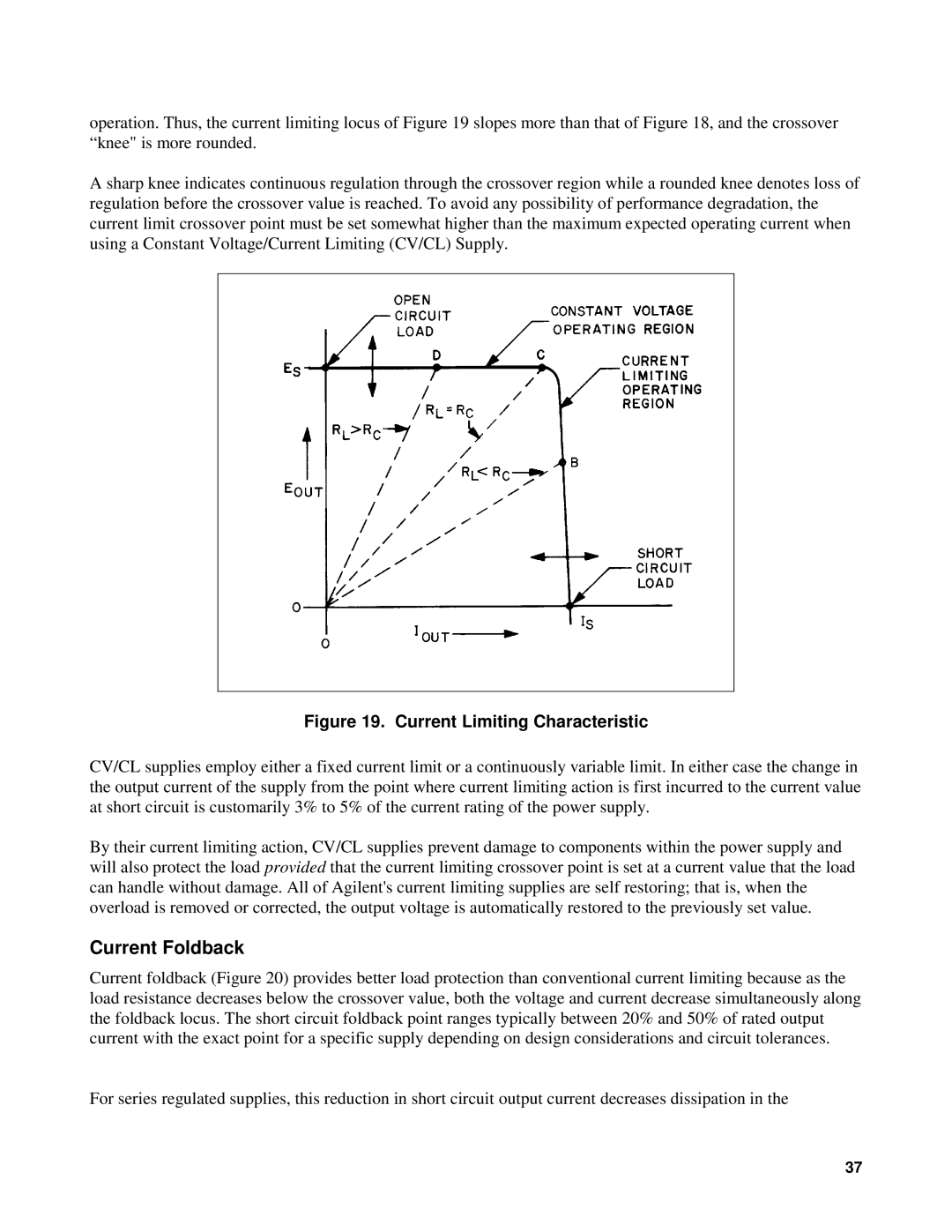
operation. Thus, the current limiting locus of Figure 19 slopes more than that of Figure 18, and the crossover “knee" is more rounded.
A sharp knee indicates continuous regulation through the crossover region while a rounded knee denotes loss of regulation before the crossover value is reached. To avoid any possibility of performance degradation, the current limit crossover point must be set somewhat higher than the maximum expected operating current when using a Constant Voltage/Current Limiting (CV/CL) Supply.
Figure 19. Current Limiting Characteristic
CV/CL supplies employ either a fixed current limit or a continuously variable limit. In either case the change in the output current of the supply from the point where current limiting action is first incurred to the current value at short circuit is customarily 3% to 5% of the current rating of the power supply.
By their current limiting action, CV/CL supplies prevent damage to components within the power supply and will also protect the load provided that the current limiting crossover point is set at a current value that the load can handle without damage. All of Agilent's current limiting supplies are self restoring; that is, when the overload is removed or corrected, the output voltage is automatically restored to the previously set value.
Current Foldback
Current foldback (Figure 20) provides better load protection than conventional current limiting because as the load resistance decreases below the crossover value, both the voltage and current decrease simultaneously along the foldback locus. The short circuit foldback point ranges typically between 20% and 50% of rated output current with the exact point for a specific supply depending on design considerations and circuit tolerances.
For series regulated supplies, this reduction in short circuit output current decreases dissipation in the
37
